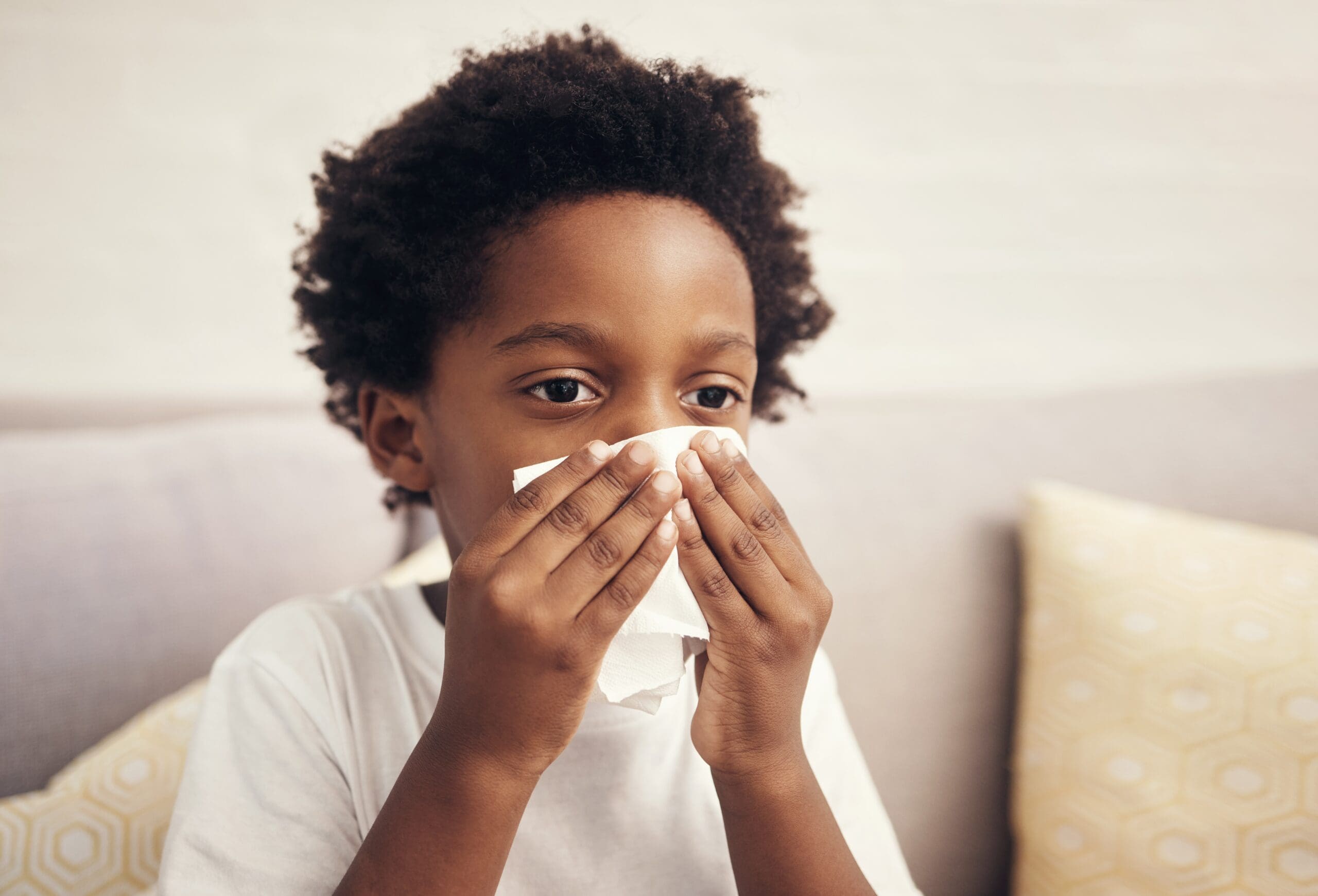With back-to-school season in full swing, ragweed season is upon us and that means fall seasonal allergies have arrived. Ragweed flowers can release up to 1 billion grains of pollen, and in Ontario, ragweed season lasts until mid-October! Ragweed allergies can have a significant impact on kids, leading to a range of symptoms such as itchy and watery eyes, sneezing, and a runny nose. These symptoms can disrupt daily activities, such as playing outside with friends or concentrating in class, making it a pressing concern for parents and caregivers to proactively address allergies and provide relief to their little ones. We chatted with Edmonton-based Dr. Stephanie Liu, a.k.a. @lifeofdrmom, for more on kids’ allergy symptoms, tips and treatment options, and understanding what the symptom differences are between allergies and colds. —Noa Nichol
Hi Dr. Liu! Please tell us a bit about yourself to start.
Life as a parent changed me as both a physician and a person. I realized how much harder it is to make healthy choices as a busy parent. My goal is to help support families to live longer and healthier lives. Becoming a new mom opened my eyes to the misinformation online which led me to start an evidence-based parenting blog @lifeofdrmom (lifeofdrmom.com). This is where I share my experiences as a parent and provide medically sound evidence on common child and maternal health concerns. Outside of work, I love spending time with my husband Graeme, our kids Madi and George, and our family dog Coco.
Spring allergies are definitely a thing, but it feels like fewer people know about fall allergies. Why is that, and what are some common fall allergies?
Fall and spring allergies are both known as seasonal allergies, and are both triggered by allergens, though occur during different times of the year and are often associated with different sets of allergens. It may seem like people talk more about spring allergies than fall allergies because after a long winter, people are spending more time outside and may notice allergy symptoms more. In the spring, tree pollen is the common culprit for allergies, while in the fall, it is ragweed. Also, some people may only have allergies to tree pollen and notice their symptoms in the spring and not have allergies to ragweed and vice versa.
To that end, what is ragweed, when does ragweed season begin and end and what does a ragweed allergy look like, especially in kids?
Ragweed season typically begins in late summer and continues into the fall. The exact timing can vary depending on your geographical location. Symptoms of ragweed allergies are often similar to spring allergies and include sneezing, a runny or stuffy nose, itchy, watery eyes, and an itchy nose and throat.
How do fall allergies, like a ragweed allergy, impact children?
Fall allergies can have a significant impact on adults and children. Fall allergies can cause physical symptoms such as sneezing, a runny or stuffy nose, itchy, watery eyes and an itchy nose and throat. It can also affect a child’s quality of life, leading them to miss school or extracurricular activities due to poorly controlled symptoms. The nasal congestion associated with allergies can make it difficult to sleep, causing poor quality sleep and daytime fatigue. Untreated fall allergies can make it difficult to concentrate in school, due to discomfort from symptoms and fatigue from impaired sleep. Behavioral issues from discomfort and lack of sleep are also possible. There is also an increased risk of ear and sinus infections as well as asthma exacerbations. Please see your health care provider if you suspect your little one may have seasonal allergies.
How can parents recognize their child’s allergy symptoms and understand the symptom differences are between allergies and colds?
It can be challenging to differentiate between the common cold and seasonal allergies as they can share some similar symptoms, but there are also some key differences. The duration of symptoms differs as allergies can last for weeks or months, while the common cold is typically less than two weeks. Seasonal allergies also tend to recur yearly around the same time each year. The onset of symptoms is also a key feature. Allergy symptoms appear immediately after exposure to allergens such as pollen. Cold symptoms can often present more gradually starting with a sore throat or stuffy nose and then progressing. The colour of nasal discharge also differs: with allergies, nasal discharge is usually clear and watery, while with a common cold, the nasal discharge can be clear or thicker and discoloured. Common colds can be associated with a fever in children, whereas allergies are not. Itchy eyes, nose and throat and sneezing are more common for allergies.
What are some tips and treatment options when it comes to fall allergies?
The ideal outcome for many people with fall allergies, like spring allergies, is to alleviate symptoms with lifestyle modifications and medications. Ways to reduce exposure to allergens include closing the windows of the car and home, staying indoors when possible, and using air purifiers to filter the air during times of peak symptoms. Showering before bed removes allergens from hair and skin and can help reduce contamination of the bedding. Some people with seasonal allergies may also need medications in combination with reducing exposures to allergens. Medications such as antihistamines and nasal steroid sprays are the mainstay of treatment. Over-the-counter antihistamines, like Reactine, can relieve sneezing, a stuffy or runny nose, itchy, watery eyes and an itchy nose and throat. Nasal steroid sprays can help with nasal congestion and sneezing and are available by prescription from your primary care provider.

Be the first to comment